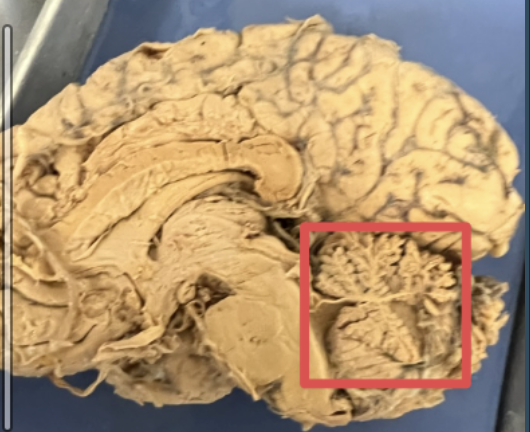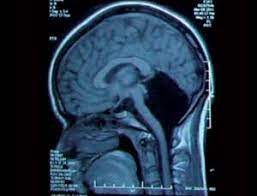What it's like to dissect a cadaver
41Kaj_Sotala
15jaspax
39Ruby
37Ainsley
3Alok Singh
1Ainsley
21Ronny Fernandez
22Kenny
6Aorou
1DiamondSolstice
18JoshuaFox
8Professora Em
8DirectedEvolution
9Professora Em
5K Rms
4Charlie Sanders
3Professora Em
3Alok Singh
3Mitisaks
3AlphaAndOmega
2Algon
1lemonhope
1T431
5scrollop
New Comment
Whoa.
Thoughts I didn't expect to think: "reading Less Wrong made me kinda want to dissect a cadaver".
Curated. I've got to hand it to this post for raw unadulterated expression of pure Ravenclaw curiosity at how the world (and we ourselves) work. It is morbid and it's perhaps fortunate the images are broken, but I'm just enjoying how much the author is reveling in the knowledge and experience here.
I like the generalized lesson here of GO LOOK AT THE WORLD, it's right there.
I don't know that I have the stomach to do this myself, but glad people are!
Loving your enthusiasm (do not read any condescension into that statement). I wish it was shared by a majority of medical students. .
Speaking as a surgeon I would like to stress one nuance; you are operating on a preserved cadaver. The tissues of a living person are indescribably more delicate and beautiful.
I would think the title is itself a content warning.
I guess someone might think this post is or could be far more abstract and less detailed about the visceral realities than it is (or maybe even just using the topic as a metaphor at most).
What kind of specific content warning do you think would be appropriate? Maybe "Describes the dissection of human bodies in vivid concrete terms."?
I thought there was a great shortage of cadavers. How did they manage to get them for a non-medical school, indeed for use by non-students? Also, I am quite impressed that any course, particularly in the Bay Area, is $60 or free.
There is a great abundance of cadavers, nor shortage at all. The U.S. and India are the largest suppliers to the world's medical schools and research labs. The U.S. obtains cadavers from willed body programs as well as unclaimed bodies. The UCSF Willed Body Program will not allow their willed bodies to be used in any sort of program that does not ultimately benefit human anatomy education or research. I run the lab that Alok is referencing where we create prosections for teaching anatomy. Despite his casual remarks of wonder and curiosity, Alok has an extraordinary gift for focusing, working hard and accomplishing tasks. His work in my lab is extremely valuable, and he sometimes brings a friend or three which makes my work as a 75 year old anatomy professor so much better and easier. These cadavers are used by anatomy professors to teach anatomy and physiology to pre-med and other allied health students in both the undergraduate and also post-baccalaureate courses (UC Berkeley Ext. and Merritt College).
It sounds like a "good" cadaver is young, not too obese or too evidently diseased. And apparently although it's illegal to buy and sell organs for transplant (one of my obsessions, AMA), it's legal to sell whole cadavers. But considering that doctors in particular (FAR in excess of the public) consider any form of financial incentive associated with body parts "repugnant," I wonder if medical schools may not choose to purchase cadavers? If so, this would then mean that there's a more adequate supply of sold or "low quality" cadavers, but a shortage of donated "high-quality" cadavers, and so abundance can coexist with shortage depending on how one is willing to source them. I have to stress that I'm not confident this is true -- it's just something to look into if you're curious.
I run the lab (Anatomy, Biology Dept. at Merritt College) that Alok is referencing, and I run a very tight ship. We begin all sessions with an invocation to the generous people who have willed their bodies to make our work possible. The invocation also references the essential meaning of "community" (we work at Merritt College a community college). Positive and respectful regard mutually applied among a small group of people is Community. This is in counterpoint to negative regard and disrespect which brings about conflict. Our work is a product of a truly exquisite community of people. The work we do in my lab brings about pro-sections of four cadavers to be used our professors in the teaching of Human Anatomy and Physiology courses at Merritt College. This is not a San Francisco tourist venue. This is a Biology Department. The pro-sected cadavers function as an essential part of this teaching. I am 75 years old and I need assistance from people who generously volunteer their energies (plus $60) under my direct guidance for my non-credit, ungraded, fee-based project. Alok who wrote the above article has come to quite a number of our sessions and has become adept at the work we do together. He has helped me with perhaps 40+ hours of hands on diligent work which I greatly appreciate. We have beautiful wet sections and beautifully tagged structures in our cadavers to show for it. And our regular curriculum anatomy students benefit greatly from this work. There is no "disrespect" for the willed bodies displayed in our class ever. I will not allow it. I've only had occasion to eject one disrespectful person in the 14 years of this course and that was for someone knowingly misgendering someone in our work group. That happened almost 12 years ago. Every one since then has been wonderfully respectful and well focused. I really do not permit any disrespect in our community which is made up of medical scientists, biology students, professional scientists in our community, students of medical sciences including alternative sciences like chiropractic, Chinese medicine, all physical therapy modalities and most especially artists who work in medical illustration. I've even had some Pixar artists who were exquisite in their focus and respect for our cadavers. This course does not ever involve "gore satisfaction", and I find the suggestion from someone who has not attended this course very disrespectful indeed. This is the course that Alok is referencing: https://www.landhortnursery.org/biology-courses.html I thank Alok for maintaining his focus and sense of respectful decorum when he comes to work with me. I should add that all people working with me have signed a Cadaver Protocol agreeing to never take photos in the lab of any of our work. Illustration is permitted especially by the medical illustrators and any other people in the visual arts. I began my anatomy teaching career teaching in a medical school in Texas, and it's an honor now to be working in the SF Bay Area in the work that I love to do in a community of people that I find uplifting.
Thank you for your contribuition. I am at work and was checking my personal email. I have too much content to read so I read my newsletters very slowly. Very happy to finally read your post. It was so random to my life but so genuine to read. It is for posts like that that I'm grateful to found out LessWrong :)
Do you happen to know the specifics of how these cadavers came to be available? There's recently been some investigative reporting on this topic. The broad gist is that most people who are "donating their bodies to science" probably don't get that companies will take those donated bodies and sell them for what are essentially tourist attractions like the one that you're participating in.
In my teaching career I have not come across "tourist attractions", but I've seen some things offered on the Internet for $3K or more that seem questionable to me. However, the lab where Alok worked was not a tourist attraction. He was among people preparing cadavers as prosections for college anatomy and physiology courses, not for a tourist attraction. The work requires focus diligence and the end product becomes part of the educational program for UC Berkeley Extension and Merritt College.
Thanks for posting this! Reading the post took me back to my med school days.
Cadaver lab has a bad reputation in medical school; almost everyone hates it. For me, the experience of learning anatomy could not have been complete without it. I attended medical school in India. We were assigned a cadaver among eight students for all of the first year, four students on each half. Fortunately, I shared my half with three other students who were not interested in 'digging in,' and I got almost half to myself! 17 yo, me, who joined med school to become a surgeon, was elated!
I love that as you narrate your experience, you highlight the curiosity of discovery. Your excitement with the process was palpable. Some of the most exciting anecdotes of my med school experience took place in the cadaver lab. Also, being in India, most of the approaches to cadaver labs were quite traditional. E.g., i can never forget the pungent stench of formalin (enough to cause teary eyes), mixed with a decaying stench that was characteristic of a cadaver lab. I could write on and on, but I don't want to hijack your post.
If you plan to go again and want to chat about something, I'd be happy to have a call!
I will look into doing this if I ever move to the bay area. However, that would need a solid reason to justify my using a cadaver again. I don't think recreational use is respectful as opposed to educational.
Ah, it's much too early in the day for med school PTSD.
I always hated anatomy classes, nor was I particularly fond of dissections, finding a relatively fresh corpse was a luxury, and most of the time they'd been embalmed in formaldehyde so long that they were one bandage wrapping away from mummy status.
At that point, finer internal structures become akin to a greyish mess of the worst cable-management imaginable, and it's an absolute nightmare to distinguish between arteries, veins or nerves, they're all thin grey wires.
Even in live patients, it's often not trivial, but surgeons do get much better at it over time.
Now, what always pissed me off was the love of Unnecessary Latin.
"quidquid latine dictum sit altum videtur", if you'd pardon my Greek.
But nothing triggered me more than the farcical naming of certain anatomical structures, because of course there's an innominate artery and innominate bone, and why shouldn't we name something as "nameless" in Latin?
Man, I'm going into psychiatry just so I never have to memorize the brachial plexus again haha.
Great piece.
Note: small thank you for the link https://www.etymonline.com/word/patience; I've never seen this site but I will probably have a lot of fun with it.
Interesting site!
Have you explored the Oxford English Dictionary - the bees knees of dictionaries and sources of etymology?
Here are the OED entries for "patience" : https://i.imgur.com/S5tGj7i.png
https://www.oed.com/viewdictionaryentry/Entry/138816
A goldmine if you appreciate the origin of language.
Curated and popular this week

